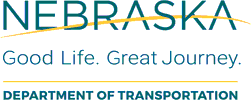Nebraska Local Technical Assistance Program

Nebraska Department of Transportation: Research Reports
Date of this Version
12-2012
Document Type
Article
Citation
MwRSF Research Report No. TRP-03-275-12
Abstract
Cross-median crashes have been identified as one of the highest injury or fatality risk crash types. Although crossmedian crashes account for only 2% to 5% of all median crash events, they are disproportionately represented in the number and frequency of fatalities on interstate roadways. Many states have utilized cable median barriers to reduce the risk of cross-median crashes, frequently with great success. However, cable median barriers are also fixed obstacles to errant vehicles. Cable median barriers can place occupants at increased risk of severe injury or fatality if the barrier fails to adequately contain and redirect errant vehicles, resulting in a vehicular penetration through the barrier or rollover. As total cable median barrier mileage continues to climb, there is an opportunity to prevent many penetration, rollover, and serious injury or fatality crashes by improving barrier design, installation guidelines, and crash-testing guidelines to more adequately address crash concerns with these barrier types. More than 6,000 cable median barrier crashes from 12 different states were analyzed to determine causes of barrier containment failures, and new crash test conditions which were reflective of these impact conditions were identified. Further crash testing and barrier redesign should reduce the frequency of barrier penetrations and rollovers.


Comments
Submitted to MIDWEST STATES REGIONAL POOLED FUND PROGRAM Nebraska Department of Roads & MID-AMERICA TRANSPORTATION CENTER U.S. Department of Transportation, Region VII University Transportation Center University of Nebraska-Lincoln